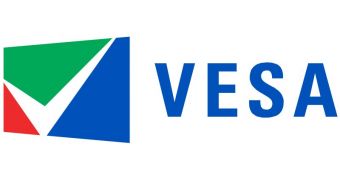With graphics and visual quality on the rise, display output technologies have to be periodically improved in order to keep up with the growing need for faster and higher volume data traffic. The DisplayPort v1.2 is a comprehensive extension to the DisplayPort standard, which offers many new benefits, such as double data rates, multiple monitor support and the ability to transport USB data between PCs and displays.
The new standard will be compatible with current DisplayPort systems and cables, but the per-lane data rate has been doubled from 2.7 Gbps to 5.4 Gbps. As such, the four lanes from a standard cable allow for 21.6 Gbps (compared with the previous 10.8 Gbps), which enables display resolutions of up to 3840 x 2400 at 60Hz, or a 3D (120Hz) maximum resolution of 2560 x 1600.
In addition to the better color depth and refresh rates, the DisplayPort v1.2 also enables multi-monitor support thanks to its ability to transport multiple uncompressed display and audio streams over a single cable. The new standard can support two monitors at a 2560 x 1600 resolution (60Hz) or four monitors at 1920 x 1200.
The full-HD, 3D stereoscopic display features supported by VESA's new release are Field sequential, side by side, pixel interleaved, dual interface and stacked 3D stereo transmissions, as well as life-like motion using up to 240 frames per second in full-HD (120 frames for each eye). Furthermore, the DisplayPort v1.2 is compatible with “3D Stereo display capability declaration Mono, Stereo and 3D Glasses.”
“DisplayPort is a truly open, flexible, extensible multimedia interconnect standard that is ubiquitous in the PC, notebook and display markets and is rapidly gaining traction in consumer electronics applications,” Bill Lempesis, VESA’s executive director, said. “DisplayPort Version 1.2 offers a complete set of benefits and capabilities that no other standard can provide. It is completely backward compatible with DisplayPort v1.1a and requires no new cables or other equipment, making it the standard of choice across the industry.”
In addition to video, the new DisplayPort also adds a number of audio enhancements. The standard supports high-definition audio formats such as Dolby MAT, DTS HD, all Blu-ray formats and DRA. In addition, it features synchronization assist between multiple audio channels, audio and video as well as for multiple audio sink devices using Global Time Code (GTC). The update even features Audio Copy Protection and category codes.
For updates, end-users may visit http://www.displayport.org/.

 14 DAY TRIAL //
14 DAY TRIAL //